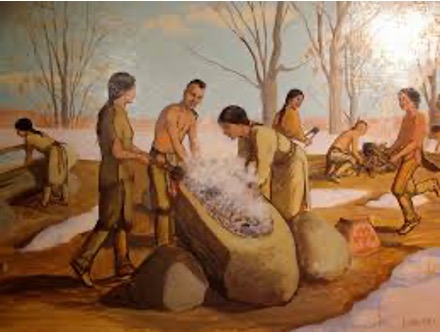Native American Day
Today is Native American Day, which is a holiday observed by a handful of states to honor the cultural contributions of Native Americans. Although Pennsylvania isn’t one of those states, we’d like to acknowledge the holiday because Native Americans have given this region a special gift – that of maple syrup!
Indigenous North Americans were the first people to discover that sugar existed in the sap of trees, and that sugar maple sap was the sweetest. This discovery was important to them because sap flows in the winter when other food sources are scarce.
Natives traditionally used the lunar calendar to decide when to harvest sap. They used an axe to gash the trees, and wooden spiles were inserted to allow the sap to drip into a vessel made from birch bark. The collected sap would then be placed in a hollowed-out tree trunk and left to freeze overnight. In the morning, the frozen water at the top would be scooped off, leaving the remaining sap below with a higher sugar content. (The more advanced version of this step in the process that we perform today is called reverse osmosis). Next, sticks or deer antlers were used to move hot rocks from a fire directly into the sap, heating it slowly and causing the water to evaporate as steam.
The Native Americans mostly made maple sugar either in granulated or hardened block form because it was easier to store than liquid syrup.
Early European settlers learned about this food source from Indigenous peoples and used their technology to make the process more efficient. They hung large iron kettles containing sap directly over a fire instead of using heated rocks. They also switched to using metal buckets made of steel and tin (and later aluminum) to collect the sap, as they were easier to keep clean and not as heavy to transport. Rolled tin became more available in the 1860s, which lead to the advent of a flat-bottomed boiling pan, the precursor to today’s evaporator. Tin cans also made it much easier to store maple syrup in liquid form.
Now that we know more about the history of maple syrup and how it was first made, we appreciate its sweetness even more.
